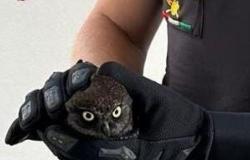It is with great satisfaction that the Ministry of Culture and the Municipality of Siena announce the publication of 17 decrees declaring the Palio di Siena to be of particularly important interest as an “expression of collective cultural identity”, drawn up following a selection of objects relating to the Palio di Siena and considered by the Contrade themselves as particularly significant in their life and history (pursuant to articles 7 bis and 10 of Legislative Decree 42/2004 “Code of cultural heritage and landscape”). These are 17 flags and 6 drums identified together with the representatives of the Contrade and which have been protected as material testimonies of the Palio di Siena.
The premise of the Ministry’s intervention, based on a long and complex project, is based precisely on the awareness that “the Palio is run all year round” and that its intangible value lies in the set of practices, representations, knowledge, techniques, rituals and initiatives that pervade the daily life of the city, well beyond the specific days in which the two moments of the festival take place, shaping its social and cultural organization. The historicity of the Palio and its ability to adapt to political, cultural, social and economic changes, maintaining broad citizen participation and important national and international visibility over the centuries, represent further reasons for its extraordinary importance in the context of cultural heritage of the Nation.
“An important result for the city – explained the mayor of Siena Nicoletta Fabio – obtained thanks to the commitment and professionalism of all parties involved. The project carried out by the Ministry of Culture to safeguard the Palio of Siena has included and involved all our Contrade with the aim of enhancing our identity heritage by guaranteeing official recognition of our traditions and all the elements and symbols connected to them ”.
The Magistrate of the Contrade also expresses his satisfaction with the conclusion of the project which had immediately received the convinced support of the Magistrate of the Contrade and to which the rectors who succeeded one another in this period of time, Claudio Rossi, Gianni Morelli, have dedicated themselves with commitment and Emanuele Squarci. “The recognition expressed by the Ministry of Culture of the value of our Festival and of the collective cultural identity represented by the world of the Contrade is the result of work carried out by the relevant bodies with the full involvement of the Contrade and the maximum collaboration and availability towards of the same – declares the rector in office Emanuele Squarci – for which the Magistrate of the Contrade wishes, once the proceedings have been concluded, to thank the director of the Central Institute for Intangible Heritage Leandro Ventura, the superintendent for the provinces of Siena, Grosseto and Arezzo Gabriele Nannetti and all their collaborators who worked with great professional commitment and personal participation for this important result”.
The decrees in question constitute, in fact, the first important result, in administrative terms, of the project started in 2019 and promoted by the Superintendency of Archaeology, Fine Arts and Landscape for the provinces of Siena, Grosseto and Arezzo and by the Central Institute for the Intangible Heritage of Ministry of Culture, which was conducted, from the early stages, in collaboration with a large scientific committee made up of representatives of the Municipality of Siena, the Magistrate of the Contrade, the University of Siena, the University for Foreigners of Siena, of the State Archives of Siena and other experts.
The central nucleus of the project was a long ethnographic research conducted in the field by Professor Katia Ballacchino (now professor of Cultural Anthropology at the University of Salerno), with which the contemporary richness of the complex world of the Palio di Siena was documented starting from the experiences of its protagonists, the Contrada women and men, and from the meanings that are attributed to them locally.
The research, which began shortly before the Covid-19 pandemic and ended at the end of 2023, also made it possible to document the years of absence of the festival, a very rare case in the centuries-old history of the Palio, further highlighting the cultural and social vitality of the Contrada relations. The most emblematic objects to be protected were then identified together with the representatives of the seventeen Contrade, bringing out, within a common framework of meaning and practices, the plurality of points of view and the specificity of each reality. The restrictions issued are not aimed at a sort of “freezing” of the objects themselves, but intend to preserve and guarantee their current uses and meanings, enhancing their link with the intangible cultural heritage of the Palio di Siena, with the history of the Contrade and with life of the people who built them, sewed them, used them, played them, lived them and, in some way, valorised them over time and continue to do so today.
The flags and drums, in fact, were chosen as representative elements for their particular historical and ethno-anthropological interest, in relation to the performative and public, but also intimate dimension of the festival, creating an inseparable combination both from a functional and symbolic point of view. Protagonists of the great events of the ritual calendar and an integral part of those practices useful for delineating the boundaries and peculiarities of the individual Contrade, drums and flags of the Palio are significant objects from a demo-ethno-anthropological and immaterial point of view and best summarize the relationship that is established between artefact, practices and knowledge, affection, memory, use, as well as imagination of the future of the heritage community. Furthermore, the production processes, the practices of use, the meanings and knowledge associated with these objects constitute a central aspect of the vitality of the Palio and the Contrade, inextricably linking the latter to the festival.
This important project represents a unique case in that the value of the Palio di Siena as an “expression of collective cultural identity” has been recognized at a national level through the adoption of innovative methodologies, such as the active involvement of the so-called “heritage communities” of the seventeen Contrade in the research and protection process. By virtue of this process, it is now possible to start a safeguard process, aimed at supporting the Contrade in maintaining the vitality of the Palio and the socio-cultural life associated with it. Once again, the Palio di Siena is an example in Italy and represents a model for the procedures for recognizing expressions of collective cultural identity in the country.
The list of assets protected by the Palio di Siena from the Ministry of Culture
- Flag of Mastuchino, Noble Contrada of the Eagle;
- Flag of 1700, Nobile Contrada del Bruco;
- Lap drum and flag from the end of the 18th century, Contrada della Chiocciola;
- Street flag before 1955 and drum Claudio Demuru known as “Bamba”, Contrada Priora della Civetta;
- Flag of Queen Margherita of Savoy, Contrada del Drago;
- Flame flag with swallowtail motif, Imperiale Contrada della Giraffa;
- Flag of the Contrada Sovrana dell’Istrice and imperial drum of the Contrada Sovrana dell’Istrice, Contrada Sovrana dell’Istrice;
- Pair of square flags that concluded the historical walk of the Palio of August 17, 2022, Contrada del Leocorno;
- Bracci flag, Contrada della Lupa;
- Flag with winged horses and imperial drum from 1928, Nobile Contrada del Nicchio;
- Pair of flags “Ettorina” and “Argia”, Nobile Contrada dell’Oca;
- Flag of the Contrada Capitana dell’Onda;
- Flag returned by the Sozzi family, Contrada della Pantera;
- Imperial drum called “Lorenzo Guasparri”, Contrada della Selva;
- Tamburo di Piazza from 1981, Contrada della Tartuca;
- Reproduction of the sixteenth-century flag of the Torre district, Contrada della Torre;
- “Old flame” flag, Contrada di Valdimontone.






